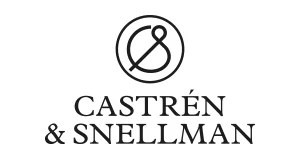For years, wind power construction in Finland was based on state aid. This kind of aid is no longer available, but technological development in the wind power industry and the decrease in the price of wind turbines has made it possible to build wind power without aid.
As part of this development, long-term power purchasing agreements between wind power companies and electricity purchasers have become increasingly common in Finland over the past few years. The agreements are usually made for 10–20 years between a wind power company and either one large or several small electricity purchasers.
The duration and agreed pricing model in this kind of agreement provides all of the parties stability, while providing the purchaser renewable energy to meet its responsibility and sustainability goals.
These kinds of agreements have been common on the international scene for some time already.
STEADY CASHFLOW AND FINANCING
A term power purchase agreement (or PPA for short) is a key requirement for securing financing in any wind power project. In the PPA, the buyer commits to buying a certain amount of electricity from the wind power company at an agreed price. This provides the wind power company with a secure cashflow, so a financier can be confident that the wind power company will be able to repay the loan for the construction of the wind farm.
SEVERAL FINANCING MODELS
The most typical project financing models are the pay-as-produced and baseload models. In the pay-as-produced model, the buyer undertakes to buy all of the electricity produced by the wind farm at any given time. In the baseload model, the buyer undertakes to buy a certain fixed amount of electricity, and the wind power plant may be liable to the buyer if the wind farm does not produce the agreed amount of electricity.
Other models that are frequently used in Finland are pay-as-produced with cap and pay-as-produced with hedge. In the former, all of the electricity produced in purchased up to a specified amount, but in contrast to the baseload model, the producer is not liable for shortfalls in energy production.
In the latter model, the entire output of the wind farm is usually purchased, but the pricing is agreed through a joint hedging system. If the price of electricity on the open market is high or is projected to increase, this model makes it possible for the wind power company to get a better price. A price floor is usually agreed to secure a minimum price level that the company received for the electricity produced by the wind farm.
PRICING FACTORS: MODEL, DURATION AND RISKS OF AGREEMENT
Pricing is the subject of much discussion in PPAs. Pricing is impacted by the model of the PPA, the duration of the agreement and by what risks are borne by the producer. In a financing context, the term that gets used is the net price of the PPA. The net price is based on the gross price agreed in the PPA deducted by various cost items: liquidity costs, profile costs, balance management, volume risk and other items, such as lodged collateral.
If you are thinking about making a PPA a part of your wind farm project or electricity procurement, Castrén & Snellman's energy industry experts can help you choose the best PPA for your wind power project or power consumption.
The content of this article is intended to provide a general guide to the subject matter. Specialist advice should be sought about your specific circumstances.

